No Nonsense Critical Carry
It’s no secret that individual first aid kits (IFAKs) are all the rage right now. Taking cues from the military community, domestic law enforcement agencies, first responders, and prepared citizens have started serious discussions regarding the purchase, employment, and fielding of Individual First Aid Kits (IFAKs) at work, on the range, and out in the field.
The employment of IFAKs, however, should be seen as more than the latest trend, fad, or "cool kid" piece of must-have kit. I’m just a normal guy, so please keep in mind that this article is written from the layperson’s perspective. I’m not a medical professional, I am not an EMT or combat medic, and for more nuanced in-depth perspectives and real-life anecdotes, it is important for the reader to seek out and learn from true subject matter experts and get vetted training.
All that being said, while I continue to seek out proper training both in my personal and professional life, an IFAK is an indispensable piece of equipment to carry, and on my person, not sitting in my patrol bag, or the trunk of my car.
Better to Have it and not Need it…
Let’s get personal for a moment.
One night, when I was still within my first year of patrol, I was wrapping up a traffic stop on the side of the road. It was dark and rainy, and I had already released the traffic violator. It was near the end of my shift, and as I scratched out the narrative on the warning I had just issued, I was approached by a pedestrian.
"Officer, sorry to bother, but did you hear any screaming coming from up the street? I think there’s a woman screaming."
"OK, thanks, please call it in, I’ll check it out."
I radioed the unknown disturbance call in and drove a block and a half up the street. There she was, lying in the planting strip with about 5 or 6 bystanders standing around her. I scanned the area looking for an aggressor, and quickly exited my patrol car while gloving up. The concerned citizens huddled around the downed woman, talking worriedly among themselves. One was kneeling next to her offering words of comfort in a singsong voice.
"Did anyone see what happened? Do any of you know her?"
"I don’t know officer, all I heard was screaming," "I found her like this," "I think she’s been stabbed in the neck!" "I saw a guy running…that way, he was wearing…"
I dropped to my knees and immediately tried to put pressure on where I saw wounds. Situations like these are when you wish you had about 15 hands – trying to broadcast suspect description, direction of travel, maintaining situational awareness knowing I was on my knees with an unknown suspect in the area, trying to staunch bloodflow, find more wounds, put pressure on more wounds, holy crap where are my bloodstoppers, where the f*ck is my backup? No Radio, she is not conscious or alert, I believe she’s been stabbed in the neck…all I had on me were a few pairs of nitrile gloves and a few packs of Vionex hand sanitizers.
Fortunately for me, I work in a larger city, and a backup officer is usually no more than two minutes out. My first backup officer arrived within a minute, assessed the situation, and immediately sprinted for his first aid kit which is standard issue…and in the trunks of our patrol cars. More precious seconds lost. Other officers flooded the area desperately asking for an updated suspect description and trying to hunt down the monster.
Fire and medics were on the scene in 3 minutes, and they immediately set to work. I stripped off my blood-covered gloves as medical personnel took over, and tried to get as much updated intel out to roving units as I could. I was way out of my lane with the victim, best to let the medical professionals do what they did best. Many witnesses stayed behind to give statements, and I set to controlling and protecting the scene, which spanned about half a block. I felt utterly useless.
Medics began to cut the victim’s clothes off to work on her, and I realized then that I had completely misjudged the extent of her injuries. She wasn’t in fact stabbed in the neck, that’s just where the blood was pooling and flowing from. She had suffered multiple stab wounds to the chest in addition to the obvious ones to the extremities that were easily visible – blood that had been captured in her down-lined vest began to spill everywhere once her clothes were cut off, its dispersion further hastened by the heavy rain.
Despite valiant efforts, she succumbed to her wounds. I found the simple steak knife tossed in the bushes while photographing the crime scene, and the monster was captured thanks to citizen tips and an amazing Homicide Squad. My first homicide victim, and a "true victim" in every sense of the word. She was just a young woman walking home from the grocery store. Unbeknownst to her, a paranoid schizophrenic who had been off his meds for several months listened to his inner voices and was compelled to kill. Tragically he succeeded.
Get Proper Training
Since then, like most other cops and first responders, I’ve seen a lot of stuff on the outside that’s supposed to stay on the inside, and several people die in front of me. Life is fragile, as we all know, but that reality comes into stark contrast when it’s right there in front of you where you can see it, hear it, and smell it.
…like most other cops and first responders, I’ve seen a lot of stuff on the outside that’s supposed to stay on the inside…
Why do I tell this story? Simply because I care about the preservation of life, including my own. Get training, even if it’s just basic CPR and first aid. There are public community groups and Tactical Medicine courses offered all over the country, it is worth the investment. This is even more important for law enforcement officers, especially since medics and fire personnel won’t come in until a scene is rendered safe.
Training, and the judicious application of trained techniques can save lives, however there is a gear component to it as well. Now, I’m not saying that readers should immediately run out and buy a backpack worth of medical gear they don’t know how to use, let alone carry. However, there are some smaller items that are easy to carry, easy to deploy, and can be utilized in emergency situations when it counts. In order for it to count, you have to have it, and have it with you.
Get Proper Equipment
This is where Blue Force Gear comes in. New for 2017 is the Micro Trauma Kit Now!, or Micro TKN! The Micro TKN! Is available loaded directly from the factory, or users can purchase the carrier empty and stock it with their own supplies, more on that later.
Let’s get the basic stuff out right up front. The TKN! is small, and therefore more likely to be carried. The TKN! is comprised of two parts, either a belt or molle-mounted horizontal sleeve and an internal organizer. The internal organizer folds onto itself and slides into the sleeve, making for a compact easily-deployed system.

The sleeve is made out of 500D Cordura and BFG’s famous 10-speed elastic. Situated on the face of the sleeve is a pocket that contains two small cards. The pocket has a see-through laser-cut cross design, and the cards serve to fill the cross pattern. The first card is a hi-viz luminescent card that will reflect light and glow in the dark if the user wants their IFAK to be visible in variable light conditions. If a more low-profile mission dictates stealth and a low visible signature, the second card is red on one side, and black on the other – still allowing observers to readily identify the TKN! as an IFAK, but the insignia is now non-reflective and non-luminescent.
The internal organizer is tri-folded on itself and has elastic straps to secure the contents within. Affixed to the back of the organizer are two easily-accessible pull tabs coated in BFG’s ULTRAcomp laminate that provides excellent grip traction regardless of wetness, gloves, or grime.
To enhance grip, BFG created the "BLIP," or "Ball Loaded Index Point," essentially a ball bearing sewn inside of each pull tab to enhance grip purchase. To further increase stability, the internal organizer is also held in place with a small square of hook and loop – enough to keep it in place, but not so much as to hinder pulling the internal organizer out when needed.
I have found over the last several months that the Micro TKN! is lightweight (advertised fully-loaded at 281 grams), unobtrusive, and stays in place very well. After multiple shifts getting in and out of my car, a fight or two, a 2-day tactical class, and my general baseline of rough handling, the Micro TKN!, aside from a little mud, is no worse for the wear.

I mentioned before that the end user can purchase the TKN! loaded or unloaded directly from BFG. If purchased loaded, the end user can choose from either "Advanced Trauma Kit Supplies" or "Basic Trauma Kit Supplies." The Advanced Trauma Kit option contains the following, and costs an even $200 MSRP:
- QuickClot Combat Gauze
- HyFin Vent Chest Seal (2 seals included)
- Cleer Medical Trauma Bandage 4in Flat Pack
- Decompression needle
- Six 2in x 9in Frog Tape
- Size 28 Nasopharyngeal Airway
- Heavy Duty Medical Gloves in tan (1 pair)
The Basic Trauma Kit option contains the following, and costs less, coming in at $129 MSRP:
- Hemostatic dressing for wound packing/clotting (1 included)
- 4in Emergency Trauma Dressing (1 included)
- 9in Medical Grade Easy Tape (6 included)
- Tourni-Kwik Compression Tourniquet (1 included)
- Heavy Duty Medical Gloves (1 pair of large sized gloves)
End users should consider their needs and level of training prior to selecting which set-up is best.
Additionally, users can simply purchase the TKN! unloaded and stock the kit as they see fit. This option costs a scant $68 MSRP. Color options are Black, Coyote Brown, Multicam, or Wolf Gray. Other color options are available upon request if the standard fare is not what is wanted.
Now, a word of caution when it comes to loading equipment individually: the kit is small, and designed to be that way. I tried to load an empty kit with 2 Hyfin Chest Seals, 2 small and 2 large Bioclusive dressings, and a 6in OLAES bandage that I had on hand, and the kit was stretched to the max. I, as well as BFG would recommend sticking with the pre-loaded options for optimal fit and ease of deployment.
Critiques
After floating a few photos on social media, I received feedback from several viewers about the obvious lack of trauma shears and CAT Tourniquet that come standard in other IFAKs from other manufacturers. This is true. It would be nice if the kit offered trauma shears, but it adds bulk, and not every end user is going to use them, nor are they in the role of having to cut clothing off of subjects. That being said, if the end user wants to purchase their own, shears can easily be slipped behind the pouch in-between the carrier and belt, however there is no mechanism to keep them retained in place. I personally keep mine tucked behind other gear on my external carrier.
The same goes for the tourniquet. Now, while the Basic version comes with a Tourni-Kwik Compression TQ, I’ve actually never used one before, and rely on my CATs. Additionally, I am of the strong belief that for duty use, a TQ needs to be carried either centerline, or equally accessible by either hand. I carry my primary TQ high and on my chest so I can access it with either hand. If I’m unresponsive, other officers can easily see it, put it to immediate use, and not have to scan all around my body looking for it. If the end user MUST have their TQ situated with the rest of their medical supplies, a TQ could easily be rigged to the TKN!. Maybe a follow-up on that later.
Conclusion
Blue Force Gear has created another winner with their Micro TKN!. It is the best balance of essential gear to address a wide range of trauma and portability. Much like a firearm for personal defense, it does absolutely no good to the end user if the end user doesn’t carry it. With the Micro TKN!, there really is no excuse.
Want to know more about Blue Force Gear? Find them on the web:
On Facebook:
On the ‘gram:
* The views and opinions expressed on this web site are solely those of the original authors and contributors. These views and opinions do not necessarily represent those of Guns & Tactics Magazine,
the administrative staff, and/or any/all contributors to this site.



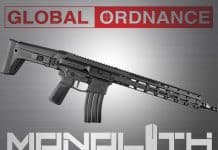
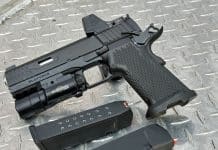
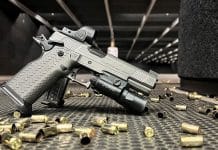

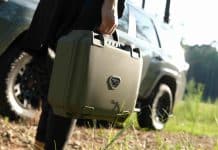
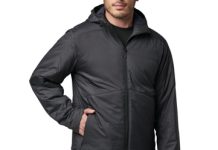
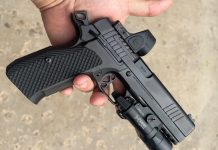
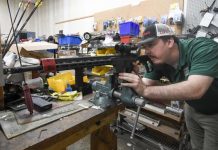
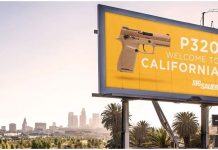
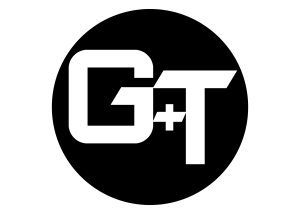
[…] t’s no secret that individual first aid kits (IFAKs) are all the rage right now. Taking cues from the military community, domestic law enforcement agencies, first responders, and prepared citizens have started serious discussions regarding the purchase, employment, and fielding of Individual First Aid Kits (IFAKs) at work, on the range, and out in […] …read more […]